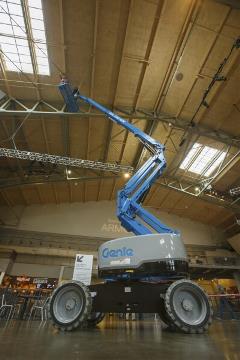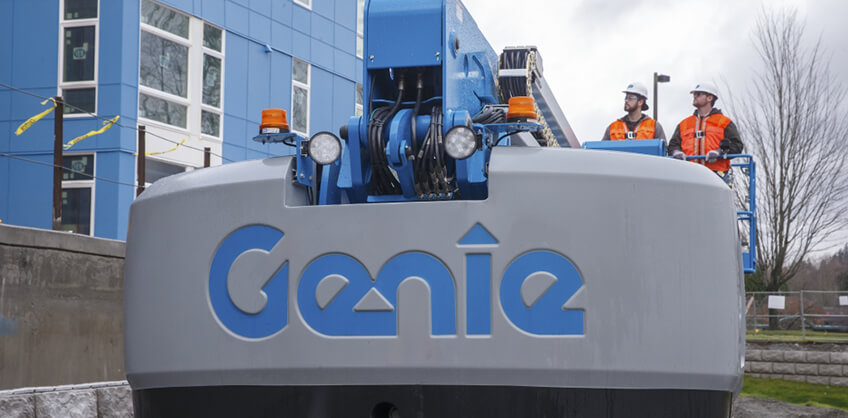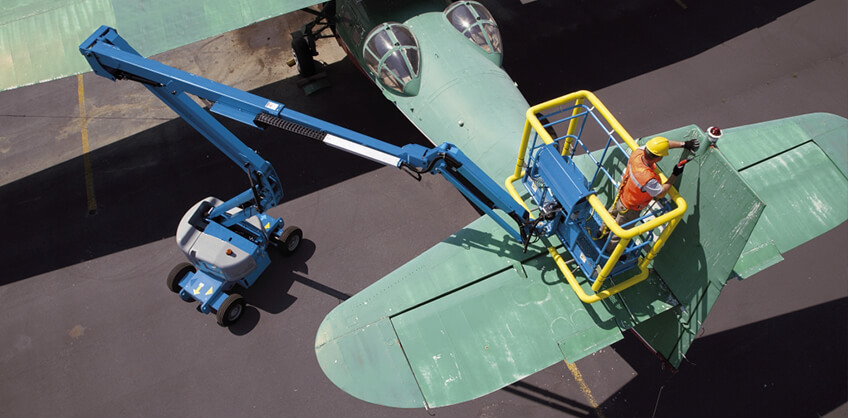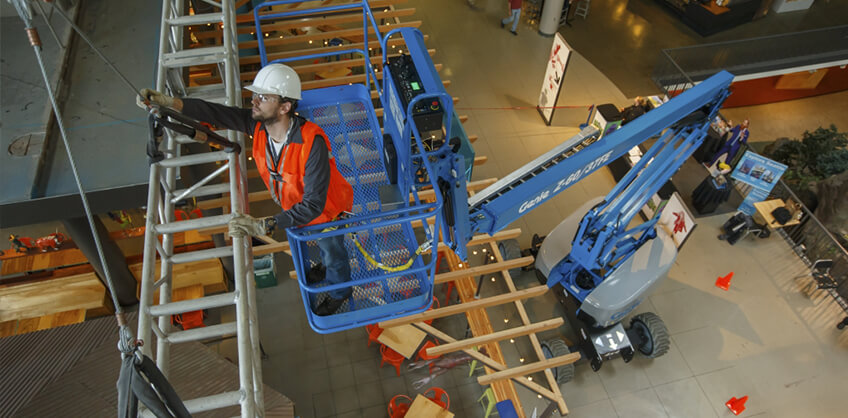Designing in 3-D
by Aron Sweeney - Sr. Marketing Manager On Feb 27, 2020, 03:00 AM
Subscribe To Aerial Pros
Filter by tags
As more firms are designing in 3-D, we are receiving an increase in demand from architects and our customers for Genie® BIM files. Some of the most popular models requested are slab scissor lifts and articulated boom lifts.
Genie has responded by creating a growing library of BIM files for some of our most popular and new models. These .rfa files allow architects and contractors to insert a specific piece of Genie lift equipment into 3-D building design plans. This way, they will know how a scissor lift, telescopic or articulated boom, or telehandler will perform at the jobsite, even before the first footing is dug.
How are they created?
Our engineering team works closely with our BIM design team to ensure that all 3-D equipment files look and function in the virtual world as our equipment would in the field.
The process starts with the BIM designer using stripped-down versions of AutoCAD drawings for a Genie machine, say the Genie Z®-60 FE fuel-electric articulated boom. Additionally, the boom’s specification sheet is used by the designer to pull relevant size, reach, range-of-motion and weight specifications.
The designer then uses all this information to create an exact virtual replica of the Genie Z-60 FE articulated boom lift in an .rfa file format. After that, a Genie engineer reviews and tests the file to ensure that all real-world machine functionality is included in the drawing. On average, the process takes a couple of weeks to complete.
The finished .rfa file is then uploaded to the Genie support landing page for BIM models: https://www.genielift.com/en-gb/support/BIM. All available machine .rft files are free to download and use for planning purposes.
What can they do?
Functionality is key to BIM files. Architects, general contractors and mechanical contractors need to know the machine’s capabilities relative to the limitations posed by the structure’s design. Using the Genie Z-60 boom example, machine size will be shown to scale in the 3-D drawing. The machine will move around the virtual site, and its boom can be extended and retracted to show reach capabilities relative to the building.
Before with 2-D paper drawings, contractors did a lot preplanning and a bit of guess work to determine what size of machine was needed to reach all inside and outside access points as well as which machines could fit through doorways and be supported by the floor. Access points that required up-and-over reach capabilities of an articulated boom were even more difficult to plan for in advance.
With 3-D designs, a contractor can drop a specific Genie machine inside the electronic drawing. They can virtually move the machine through doorways and around obstructions to see the size of machine needed to complete the job. The BIM file also includes the machine’s weight, so a contractor will be confident the floor will handle the load.
Designing in 3-D takes a lot of what used to be done in the field at the time of construction and completes it in advance, on the computer. It allows the contractor to preplan for the type of lift equipment that will be needed to install lighting, ductwork, utilities and other items. It also gives the contractor the ability see at the design stage any areas where a scissor won’t work, and a boom is needed.
What if I don’t see the model I need?
In the short term, 30 of our most requested and newest models are planned for the Genie BIM library. As we develop new models, a BIM drawing of the machine will be designed for the library. For the remaining models, BIM drawings will only be developed if there is a qualified worldwide need. Therefore should you have a need for a BIM file of a model not listed on our support site, let your Genie Marketing and Sales contact know. This will help us determine which BIM files are in most demand.
Related Posts

Why BIM?
“We think of BIM as a beginning-to-end concept,” says Josh Lyons, architect for The Thrasher Group, an architecture, engineering and field services company, headquartered in Bridgeport, West Virginia, US.
Continue Reading
-terms.jpg?sfvrsn=bb8c032e_21)
A Glossary of Common Mobile Elevating Work Platform (MEWP) Terms
Safety is always job one on aerial worksites.
Continue Reading

Recommending the Right MEWP
In today’s competitive market, we, at Genie, know that it is more important than ever for you to establish and earn your rental customers’ respect as a trusted advisor.
Continue Reading


